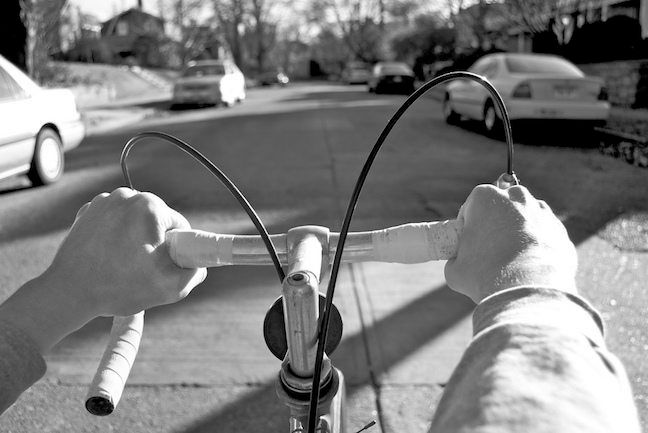Point of View in Writing
 photo by Will White Point-of-View (POV) is a grammatical position through which you choose to tell a story. I say grammatical as a way to distinguish the different types of POVs. A POV uses first, second or third person as a narrative structure. This assumes you will write a rather traditional work. Experimental writing may attempt to dispense with POV, which is to say the author has no narrative structure per se. They may still write using I/You/They, but those pronouns don’t function as part of the story’s scaffolding, but then again they just might. This is why experimental literature can be tricky with regard to POV. So we will focus on more traditional uses of POV. First person singular uses I. First person plural uses We. Second person singular or plural uses You. Third person singular uses He/She. Third person singular uses They.
photo by Will White Point-of-View (POV) is a grammatical position through which you choose to tell a story. I say grammatical as a way to distinguish the different types of POVs. A POV uses first, second or third person as a narrative structure. This assumes you will write a rather traditional work. Experimental writing may attempt to dispense with POV, which is to say the author has no narrative structure per se. They may still write using I/You/They, but those pronouns don’t function as part of the story’s scaffolding, but then again they just might. This is why experimental literature can be tricky with regard to POV. So we will focus on more traditional uses of POV. First person singular uses I. First person plural uses We. Second person singular or plural uses You. Third person singular uses He/She. Third person singular uses They.
Within third person there is third-person close and third-person omniscient.
Each structure has strengths and weaknesses. Each structure will allow you certain insights into your characters and your narrator (if you have one), but not others. A very important reminder: the use of I, you or he/she does not necessarily make a work first-, second- or third-person POV. You may have to read for many paragraphs to determine the narrative structure. As a writer you can use this to your advantage. The first-person singular allows you to provide all manner of insights and thoughts of your narrator. Holden Caufield narrates “The Catcher in the Rye.” We know what he thinks and feels, and that’s it. Attempts to describes the internal thoughts of other characters fails as a first-person POV. I cannot know another person’s thoughts unless they choose to share them with me. The first person plural, though rarely used, can place an individual narrator within a larger group of family, friends or community. Julia Otsuka uses it well in her novel, The Buddha in the Attic as does Joan Chase in During the Reign the Queen of Persia. I could have written “I will be sharing these texts with you in the next few weeks.” But I didn’t. I chose to use the first-person plural instead. What changes when I use we instead of I? How might that impact your writing? Second-person singular and plural is a fascinating and unique strategy through which to structure your work. Second-person works have been around a long time. Both Leo Tolstoy and Nathaniel Hawthorne wrote short stories using the second person. More contemporary works include Self-Help by Lorrie Moore and Bright Lights, Big City by Jay McInerny. You swear you won’t ever write a story using second person. But you have to admit there are distinct advantages to it. Whether it’s writing one of the earliest forms of you-are-there reporting in Sebastopol in December (Tolstoy), a very chilling tale in The Haunted Mind (Hawthorne) or the very distinct distance between what we believe to be true about ourselves and what is actually true (Moore and McInerny), the second person intrigues you. The trick is knowing how to best take advantage of its effects. Third-person close. Third person close can almost pass as first person. The intent of third person close is to follow one particular character and no other. The story is told from that character’s perspective. J.K. Rowling did it to great effect in Harry Potter. Everything is told from his perspective using third person. Third-person omniscient. Used in romance and thriller genres. Peruse the web and you’ll find writing gurus who tell you, “don’t get into the head of more than one character in any scene.” Whatever. Know the rule then break it as you need to. The why determines the how in writing. You might decide to have each paragraph in one chapter told from a different character’s point-of-view. Excellent. I’m happy to read on, as long as the why makes it worth my while. The suspension of disbelief is overrated, I think. Of course it’s a construct! I will happily read any POV, even several in the same paragraph (and yes, we’ll be talking about how Mohsin Hamid does this in How to Get Filthy Rich in Asia).What I value more as a reader is a writer’s execution. I say go for it. Think about some of your favorite works of literature. Which POV (or POVs) did they use? How might you use some of this in your own writing?